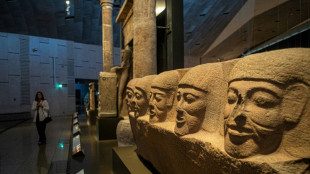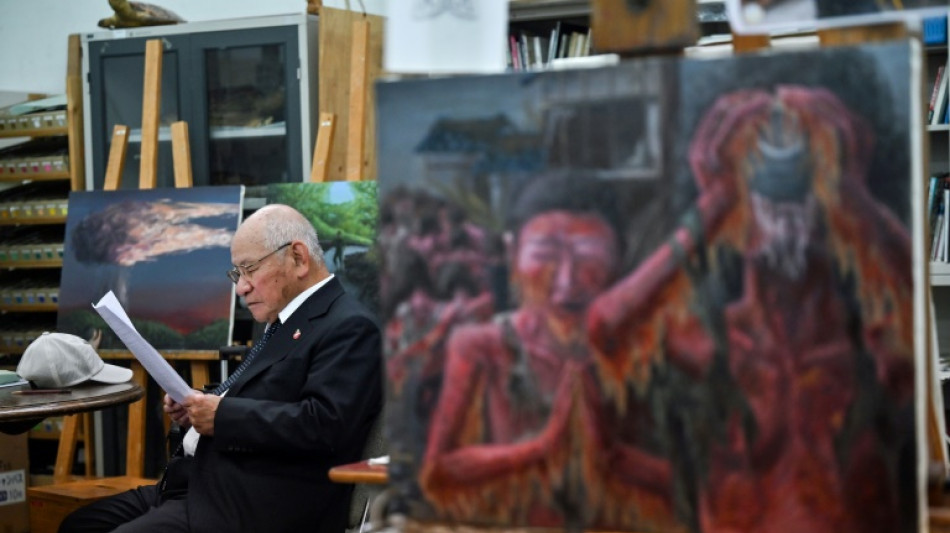
-
 Sinner boosts number one bid in Paris, to face Zverev in semis
Sinner boosts number one bid in Paris, to face Zverev in semis
-
Springer back in Toronto lineup as Blue Jays try to close out Dodgers

-
 Nationals make Butera MLB's youngest manager since 1972
Nationals make Butera MLB's youngest manager since 1972
-
Guirassy lifts Dortmund past Augsburg ahead of Man City clash

-
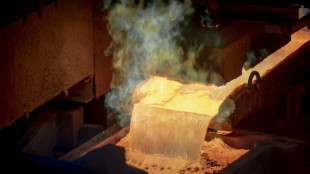 G7 says it's 'serious' about confronting China's critical mineral dominance
G7 says it's 'serious' about confronting China's critical mineral dominance
-
NFL fines Ravens $100,000 over Jackson injury status report

-
 NBA refs to start using headsets on Saturday
NBA refs to start using headsets on Saturday
-
Trump says Christians in Nigeria face 'existential threat'

-
 French-Turkish actor Tcheky Karyo dies at 72
French-Turkish actor Tcheky Karyo dies at 72
-
Food stamps, the bulwark against hunger for over 40 mn Americans
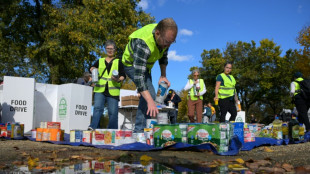
-
 Trump keeps world guessing with shock nuclear test order
Trump keeps world guessing with shock nuclear test order
-
Wall Street stocks rebound on Amazon, Apple earnings

-
 US Fed official backed rate pause because inflation 'too high'
US Fed official backed rate pause because inflation 'too high'
-
Prayers and anthems: welcome to the Trump-era Kennedy Center

-
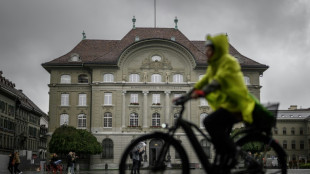 Swiss central bank profits boosted by gold price surge
Swiss central bank profits boosted by gold price surge
-
Sinner beats Shelton to boost number one bid in Paris

-
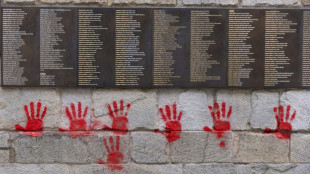 French court jails Bulgarians for up to four years for Holocaust memorial defacement
French court jails Bulgarians for up to four years for Holocaust memorial defacement
-
Profits dip at ExxonMobil, Chevron on lower crude prices

-
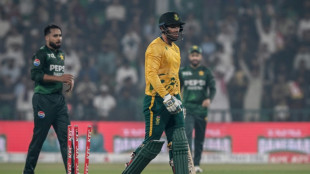 Ashraf and Mirza skittle South Africa as Pakistan win 2nd T20
Ashraf and Mirza skittle South Africa as Pakistan win 2nd T20
-
2,000 trucks stuck in Belarus after Lithuania closes border: association

-
 French lawmakers reject wealth tax proposal in budget debate
French lawmakers reject wealth tax proposal in budget debate
-
Premier League blames European expansion for lack of Boxing Day games

-
 Bublik sets up Auger-Aliassime semi-final at Paris Masters
Bublik sets up Auger-Aliassime semi-final at Paris Masters
-
World's most expensive coffee goes on sale in Dubai at $1,000 a cup
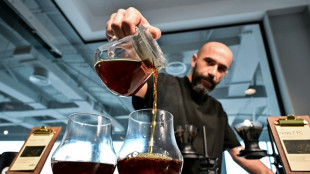
-
 Trump stirs global tensions, confusion with nuclear test order
Trump stirs global tensions, confusion with nuclear test order
-
Panic across US as health insurance costs set to surge

-
 Court eases ban on Russian lugers but Olympic hopes on thin ice
Court eases ban on Russian lugers but Olympic hopes on thin ice
-
England captain Itoje targets Autumn Nations clean sweep

-
 Calmer Sabalenka sets sights on WTA Finals crown
Calmer Sabalenka sets sights on WTA Finals crown
-
Spurs boosted by Romero return for Chelsea clash

-
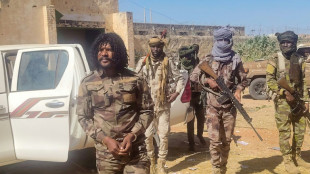 Sudan's RSF claims arrests as UN warns of 'horrendous' atrocities in Darfur
Sudan's RSF claims arrests as UN warns of 'horrendous' atrocities in Darfur
-
US says 'non-market' tactics needed to counter China's rare earth dominance
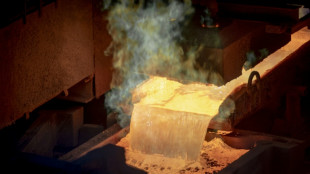
-
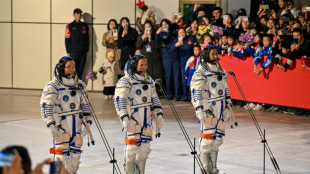 China sends youngest astronaut, mice to space station
China sends youngest astronaut, mice to space station
-
From adored prince to outcast, Andrew's years-long fall from grace

-
 Rodri return fuels Guardiola belief in Man City title challenge
Rodri return fuels Guardiola belief in Man City title challenge
-
China holds send-off ceremony for space station astronauts
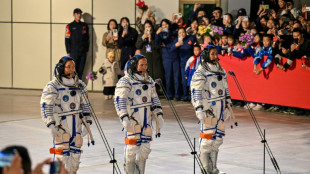
-
 Barcelona to show off unfinished Camp Nou with public training session
Barcelona to show off unfinished Camp Nou with public training session
-
Turkish court jails 11 for life over deadly hotel inferno
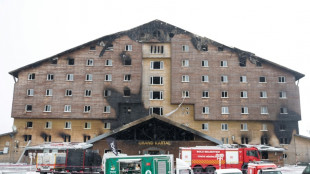
-
 Auger-Aliassime ends Vacherot run to reach Paris Masters semis
Auger-Aliassime ends Vacherot run to reach Paris Masters semis
-
Australia captain Wilson denies Wallabies use 'dangerous' breakdown tactics

-
 'Populists can be beaten': Dutch centrist Jetten claims election win
'Populists can be beaten': Dutch centrist Jetten claims election win
-
China's suspension of rare earth controls applies to EU: official

-
 Italy complains about strong euro, urges ECB to cut rates
Italy complains about strong euro, urges ECB to cut rates
-
Louvre to get anti-ramming barriers by year end: minister
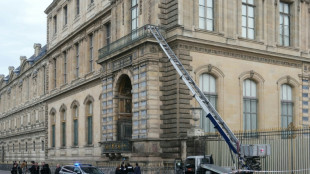
-
 Wall Street bounces on Amazon, Apple earnings
Wall Street bounces on Amazon, Apple earnings
-
AI giants turn to massive debt to finance tech race

-
 Japan PM says raised 'serious concerns' with Xi on South China Sea, Xinjiang
Japan PM says raised 'serious concerns' with Xi on South China Sea, Xinjiang
-
Shein set to open first physical store in Paris
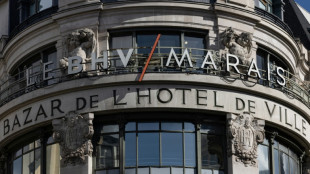
-
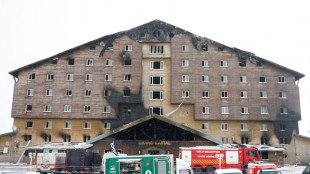 Turkish court jails 11 for life over deadly hotel fire
Turkish court jails 11 for life over deadly hotel fire
-
Hazlewood stars as Australia ease past India to win 2nd T20
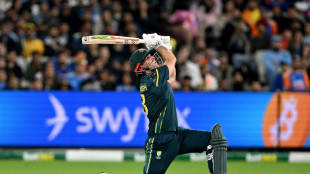

Hiroshima teens relay atom bomb horror with art
Trudging through the ruins of Hiroshima after the US atom bombing four days before in 1945, five-year-old Masaki Hironaka clutched his mother's hand and silently vowed to protect her.
It's one of many scenes from 80 years ago this August still etched in the octogenarian's memory -- and now depicted vividly by Japanese teenagers on canvas.
For almost 20 years, Motomachi High School in Hiroshima has tasked its art students with interviewing hibakusha -- atom bomb survivors -- and turning their harrowing testimonies into paintings.
Showcased recently by the school ahead of the August 6 anniversary were 15 new artworks, including of scorched soldiers writhing in pain, and a horror-stricken girl surrounded by an inferno.
"I think the painting very accurately captures my feelings at the time," Hironaka told AFP, nodding with satisfaction at one such piece that immortalised an "unforgettable page of my life".
"It's authentic, and very well drawn."
Schoolgirl Hana Takasago's evocative art shows a young Hironaka looking up at his mother as they plod through what remains of Hiroshima on August 10, 1945, with fires still lingering.
A few days before, his father had come home heavily burned by the blast and asked Hironaka to yank out a glass shard stuck deep into his flesh.
He died soon afterwards.
The widowed mother, clasping Hironaka's tiny hand and with his younger sister strapped on her back, is depicted gazing down and mumbling to him about her fears.
"In that moment, I was gripped by the strong determination to help and support her, young as I was. That's the feeling captured here," said Hironaka.
- 'Inner struggle' -
The "Little Boy" bomb dropped on Hiroshima killed around 140,000 people, including many who died from radiation.
Motomachi High is now an integral part of what was originally the Hiroshima Peace Memorial Museum's initiative, which has over the years birthed more than 200 artworks.
The idea is to keep memories of the bombing relevant for younger generations.
In the last eight months or so, witnesses including Hironaka sat down with students every few weeks to review their works in progress, sometimes requesting a drastic re-do.
"I originally had Mr. Hironaka and his mother face straight ahead, but he told me that their looking ahead doesn't really convey her inner struggle at the time," Takasago, 17, told AFP.
"Since I've seen none of these described scenes myself, I was never confident that my depictions were accurate," she said in the school's cluttered art room.
The same went for Yumeko Onoue, 16, whose art depicts pumpkins that Hironaka remembers were covered in soot from radioactive "black rain".
Having initially drawn the fruit's leaves to face upward with vitality, she "completely re-drew them to wilt," to match Hironaka's memory.
"While photos from that era were mostly black and white, paintings can add colour and emphasise key elements, making them, I think, ideal for expressing intended messages," Onoue said.
- 'The last generation' -
Many of these teens relied on their imagination and perused historical documents.
Immersing themselves in the carnage took a toll on some such as Mei Honda, 18, who described the "emotionally draining" task ofdepicting charred skin and flesh dangling from people's arms.
Based on what one hibakusha witnessed, her painting showed one such woman gulping water.
"I initially depicted her arms pressed against her torso, but skin contact would have hurt her badly because of the burns," Honda said.
Recent data showed that the number of survivors from the bombings is now below 100,000, with the average age 86 years old.
"We are probably the last generation to have the opportunity to listen face-to-face to the experiences of hibakusha," Aoi Fukumoto, a 19-year-old Motomachi High alumna, told AFP.
This sense of crisis was instilled by the project in other participants this year -- including Takasago.
"Before I embarked on this project, what the atomic bomb did had always felt distant to me even as a Hiroshima native," she said.
But that changed after she lived vicariously through Hironaka's story.
"I can no longer remain a bystander," she said.
M.Qasim--SF-PST


